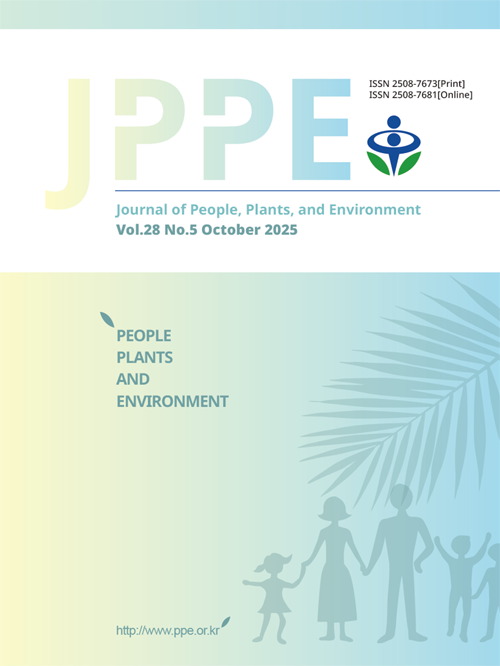A Study of the Initial Mulching Effect in a Sapling Planting Area: Focusing on Sapling Growth Rate and Weed Occurrence Characteristics
이용수 6
- 영문명
- 발행기관
- 인간식물환경학회
- 저자명
- Deok-Ryong Kim Ji-Hyeon Sung Eun-Ji Cho Dong-Gil Cho
- 간행물 정보
- 『인간식물환경학회지(JPPE)』제28권 제5호, 703~717쪽, 전체 15쪽
- 주제분류
- 자연과학 > 자연과학일반
- 파일형태
- 발행일자
- 2025.10.30
구매일시로부터 72시간 이내에 다운로드 가능합니다.
이 학술논문 정보는 (주)교보문고와 각 발행기관 사이에 저작물 이용 계약이 체결된 것으로, 교보문고를 통해 제공되고 있습니다.

국문 초록
영문 초록
목차
해당간행물 수록 논문
- 인간식물환경학회지(JPPE) 제28권 제5호 목차
- Enhancing Rural Water Utility Sustainability Through Creative Financing Mechanisms
- Evaluating Public Service Experience in Ecological Institutions: A Structural Pathway Approach to Visitor Satisfaction at the Sejong National Arboretum
- A Study of the Initial Mulching Effect in a Sapling Planting Area: Focusing on Sapling Growth Rate and Weed Occurrence Characteristics
- Carbon Fraction of 51 Native Shrubs in Urban Green Spaces in Korea: A Comparative Study of Evergreen, Deciduous, and Vines
- A Study on Hydration Reactions Involved in the Reduction of Nitrogen Oxides (NOx) by Hydroponic Vegetated Biofilters
- Analysis of Constraints in Agricultural Production for Climate Change Adaptation in Thanh Phu District, Mekong Delta Vietnam
- Cultural Aesthetics in Indoor Plant Design: A Comparative Study of Domestic and Foreign Styles
- Identification of Chlorophyll Fluorescence Parameters for Evaluating Drought Stress in Garden Plants
- Preference for Components of a Horticultural Therapy Program for Alleviating Job Stress Among Secondary School Teachers
- The Effects of Horticultural Therapy Based on Person-Centered Theory on the Emotional Competence and Concentration of Elementary School Students in Special Education Classes
- Changes in Psychophysiological Functions of Adults Examined through Vibraimage Before and After Viewing Ornamental Flowering Plants
- An Analysis of the Current Status and Curriculum of Citizen Gardener Training Courses in Korea
- Exploring Age-Specific Determinants of Satisfaction among Urban Forest Visitors and Analyzing Their Effects on Local Environment Perceptions and Policy Support
- Policy Transfer Typology and Strategic Directions for Regional Adoption of the Global Biodiversity Framework
참고문헌
관련논문
자연과학 > 자연과학일반분야 BEST
- 우리나라 국가위기경보체계의 개선방향
- 유아교사의 디지털 수용태도 및 디지털 리터러시가 디지털놀이 지원역량에 미치는 영향
- 신도시 상업시설 실태조사를 통해 상가공실률 상승 원인분석에 관한 연구
자연과학 > 자연과학일반분야 NEW
- 인간식물환경학회지(JPPE) 제28권 제5호 목차
- Enhancing Rural Water Utility Sustainability Through Creative Financing Mechanisms
- Evaluating Public Service Experience in Ecological Institutions: A Structural Pathway Approach to Visitor Satisfaction at the Sejong National Arboretum
최근 이용한 논문
신규가입 혜택 지급이 완료 되었습니다.
바로 사용 가능한 교보e캐시 1,000원 (유효기간 7일)
지금 바로 교보eBook의 다양한 콘텐츠를 이용해 보세요!



